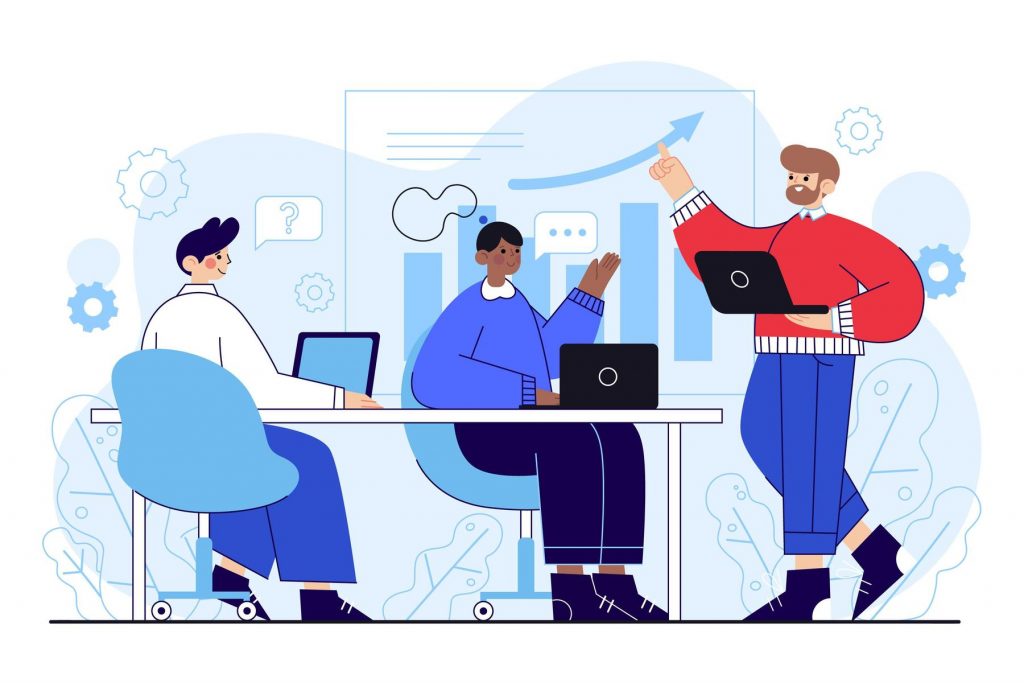Are you struggling to keep your business ahead in an increasingly competitive market? Wondering how leading companies are innovating faster, reducing costs, and delivering personalized experiences? What if there was cutting-edge technology that could unlock new levels of creativity and efficiency for your business? Could Generative AI be the missing piece in your strategy for success? In this blog, we will explore how generative AI is impacting your business. So, let’s dive in!
What is Generative AI?
Generative AI is a type of technology that employs complex algorithms to generate new and realistic material based on previously learnt data, such as writing, photos, or even noises. These algorithms function by training on massive volumes of data, allowing them to recognize patterns and produce material that appears to be unique. The most powerful types of generative AI are based on what are known as foundation models, which are trained on massive datasets without the requirement for specific labels. This enables the AI to learn in a more flexible manner and tackle a wider range of tasks.
Why is Generative AI Important?
Generative AI is essential because it boosts creativity by creating new content based on patterns learnt from data. It also personalizes user experiences, enabling firms to adjust information to specific customer requirements and interests. Furthermore, generative AI promotes cooperation by working alongside individuals, using their talents to create greater results. This technology also speeds up procedures, increasing operational efficiency. Furthermore, its broad effect spans sectors, providing greater insights into artificial and human intelligence, propelling innovation and understanding forward.
How Does Generative AI Impact Businesses?
1. Improved Customer Experience
Improving customer experience is a prominent application of generative AI, giving organisations a valuable tool for improving interactions. Businesses can create more engaging and rewarding consumer experiences by implementing dynamic AI agents that provide human-like replies, hence strengthening connections.
These AI-powered chatbots, based on advanced language models, provide more nuanced and intelligent replies, enhancing interactions and making customers feel heard and understood. Beyond direct connection, generative AI is an invaluable support mechanism for customer care personnel. These AI agents use natural language processing (NLP) to listen to discussions between agents and clients, instantly collecting relevant information to help in real time. This increases service quality and cuts response time and the workload of human agents.
2. Personalized Learning
Generative AI systems excel in adaptive learning, which enables them to constantly improve by incorporating feedback and analyzing new data. This constant modification improves their effectiveness, allowing them to offer outcomes that better match user preferences and company objectives. For example, in a corporate environment, generative AI can be used to improve marketing strategy by analyzing consumer interactions and feedback. As the system better understands client preferences and behaviors, it will create more focused and successful marketing efforts. Furthermore, it may tailor recommendations and information to particular client demands, resulting in more personalized and effective interactions. This skill not only improves the efficiency of marketing activities, but also allows organizations to remain flexible and responsive to changing market trends.
3. Data Generation
Generative AI provides considerable data synthesis benefits. These AI algorithms can mix and interpret massive volumes of data to generate significant insights by analyzing many datasets. For example, in the financial business, generative AI can build predictive models by analyzing market patterns, customer behavior, and economic statistics. These models assist organizations in making sound investment decisions by offering a clearer view of future market movements. Generative AI, which harnesses the power of data synthesis, helps organizations in many industries to access actionable insight, offering them a competitive advantage in today’s data-rich environment.
4. Increased Efficiency and Productivity
Generative AI improves efficiency and productivity by automating difficult and time-consuming operations, allowing firms to optimize workflows and better allocate resources. For example, in the manufacturing industry, AI can deliver optimized production plans that decrease waste and increase overall efficiency. In customer service, generative AI can assist support agents by summarizing tickets, proposing relevant replies, and selecting the best tone for conversations. This allows agents to resolve enquiries faster and more correctly, increasing productivity and enhancing customer service quality. Businesses that use generative AI can boost productivity, save operating costs, and improve performance across several departments.
5. Reduced Time and Costs
Generative AI saves time and money by automating processes that previously needed significant human effort. For example, in architecture and design, AI can quickly generate architectural plans based on certain factors, considerably speeding up the design process and minimizing manual labor. AI can also analyze stakeholder comments and market trends to produce new product ideas and improve designs more effectively. This capacity to analyze massive amounts of data quickly not only reduces operating costs, but also shortens project timeframes and improves resource al__cpLocation, resulting in increased overall efficiency for enterprises.
6. Boosted Creativity
Generative AI greatly increases creativity by allowing organizations to efficiently create a diverse range of interesting and unique content. In the advertising sector, for example, AI-powered solutions can create intriguing ad copy, eye-catching images, and even dynamic video material. This feature not only speeds up the creative process, but also allows firms to experiment with new thoughts and ideas without the constraints of physical labor.
Beyond advertising, generative AI may help with a variety of creative tasks, from designing distinctive product packaging to creating interactive customer experiences. It’s an effective tool for brainstorming and refining ideas, allowing teams to push creative limits and remain ahead of trends. By automating repetitive operations and providing new viewpoints, generative AI enables firms to sustain a steady flow of creative content while remaining competitive in a constantly evolving market.
Generative AI Services at Mindpath
Mindpath provides a variety of services that leverage generative AI to help your business succeed.
Our artificial intelligence (AI) can generate interesting material, such as ad copy, graphics, and even motion pictures, all personalized to your specifications. This means less time spent on manual labor and more time for creativity.
We also utilize AI to analyze data and produce valuable insights, allowing you to make better decisions. Whether you need new marketing ideas or better methods to understand your consumers, our generative AI services will help you stay competitive in today’s fast-paced environment.
Wrapping Up!
Generative AI is a game changer for organizations, providing creative solutions for increasing creativity, streamlining processes, and improving consumer experiences. By automating complicated activities and delivering important insights, it allows businesses to cut expenses while staying competitive. As more firms use this technology, those that use generative AI will be better positioned to promote development, respond to market changes, and achieve long-term success. Embracing generative AI is more than simply a technological advancement; it is a strategic step towards a more dynamic and efficient future. At Mindpath, we offer tailored generative AI solutions that streamline processes, cut costs, and elevate customer experiences. Embrace the future with Mindpath and unlock new opportunities for growth and innovation in today’s fast-paced market.
Ready to elevate your business with cutting-edge technology?
Discover how Mindpath’s generative AI solutions can transform your operations and drive success.













